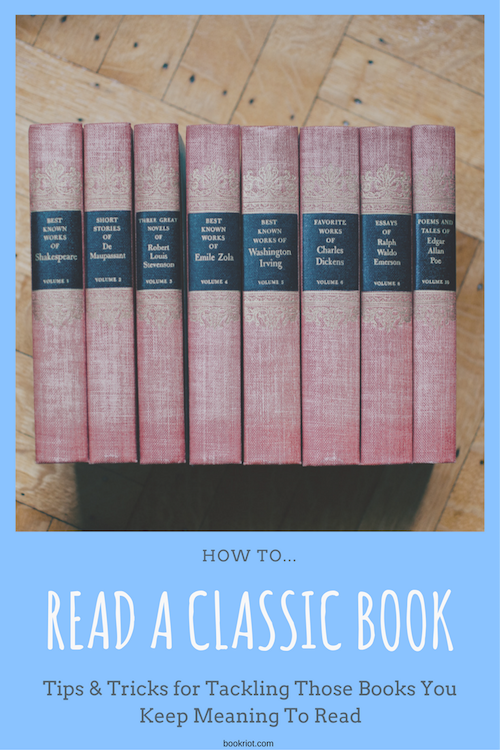How to Read a Classic
First of all, let’s not get into semantics about what makes a classic… the type I’m talking about here is the kind of book that’s old enough that it 1.) Impresses you and others by mere mention of the title, 2.) Has been loved for over a century and is still bought and sold regularly at bookstores, and 3.) Often scares the crap out the general reading public (either because they originally read it with a scary high school English teacher or because they have never attempted to read it at all).

Now, how does one go about experiencing this impressive literature that everyone wants to say they have read, but so many never do? Here are my suggestions:
- Never go it alone (unless you are a professional like Amanda – i.e. you read these books like the rest of us read the newest page-turners on the bestseller list).
- Care about which translation you are purchasing — it does matter.
- Don’t rule out the glorious audiobook. Most classics have been put onto audio.
1. Never Go it Alone: What I mean by this is, if you are like me (a procrastinating, double personality type, who switches between headline news and Gossip Girl without batting an I-know-I’m-a-weirdo-who-doesn’t-fit-a-demographic eyelash), there is a BIG chance that if you aren’t in the mood (which may be 25%-75% of the time) you may find yourself picking up the latest installment of a Janet Evanovich book to zone out with rather than that copy of Les Miserables you’re trying desperately to work through.
Having a group can not only help keep you accountable but can also make the text more interesting. Earlier this year I accidentally (accidentally meaning one or two of us were going to read a book and then it turned into many more of us reading many more books) started a Read-a-Long section on my book blog. I have found that books I have wanted to read for years are actually getting read. Partly because I know I have a group to answer to each Friday, and partly because reading (or hearing) others’ thoughts on a particular work helps me enjoy and become more engaged in the work. So, be it a read-a-long on a blog (there are many to choose from… in fact, Austen in Advent is going on right now), or a real life book club — reading together is a great way to keep you on track.
2. Care About the Translation: Does it really matter which translation you choose? Can’t you just choose the cheapest and be done with it? Of course! And sometimes the cheapest is the best version. However, which translation you choose will depend on what kind of reader you are. I am a Lazy Reader. Therefore, I prefer the footnotes to be right there on the same page in which the word/phrase/reference is being used. I don’t like to have to flip to the back of the book (or worse, look it up on the computer if the translation has no notes, gasp!) every few pages to get a better idea of what the author is trying to say. Do yourself a favor and flip through a few translations of the same title to get a feel for what you like.
3. Don’t Rule Out the Glorious Audiobook: Yes, listening to a book means you have “read” it. Remember how you had reading time in school or home with your teacher and parents? Remember how they often read books to you? Do you consider the books you loved and knew by heart when you were a little lad or lass not part of your personal library because they were read to you instead of by you? Of course not. So, don’t be afraid to check out the audio version of the classic you want to conquer. Sometimes, the way a sentence is read can make all the difference; and the people reading the books are not just winging it, they have mastered the ability to read the prose the way it was meant to be read (hopefully… or else they shouldn’t be reading the book at all). Just remember this: “unabridged” means you are getting the book read to you in full, “abridged” means they have cut out pieces of the book… not cool, just say no to “abridged.”
So, go find that classic that you’ve been meaning to tackle for the last 15 years… and enjoy it.










